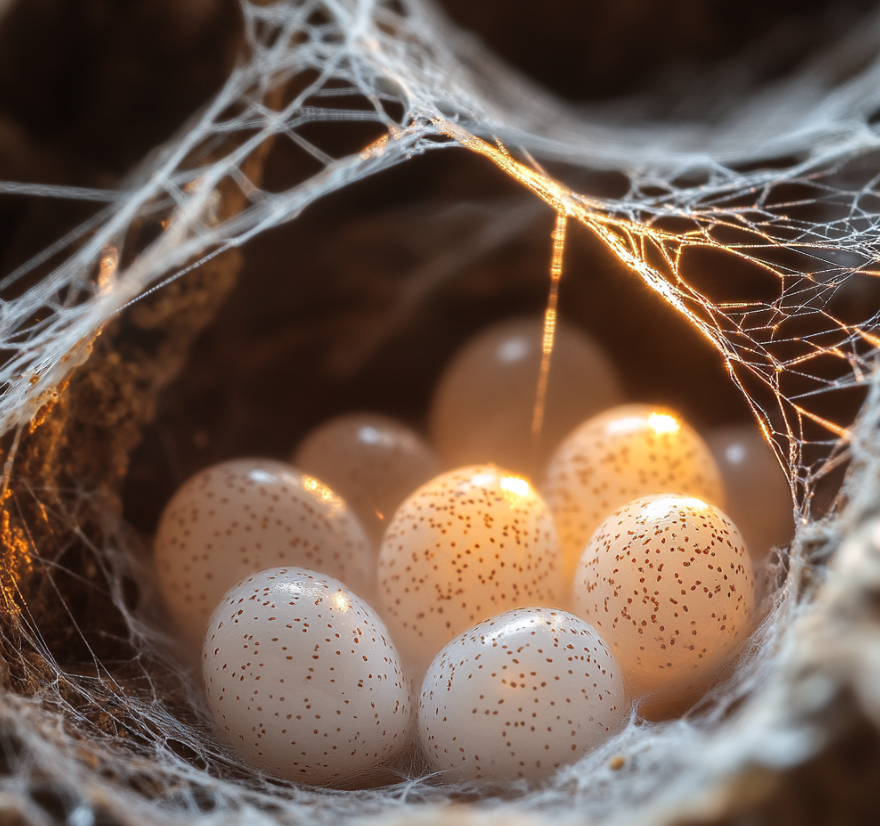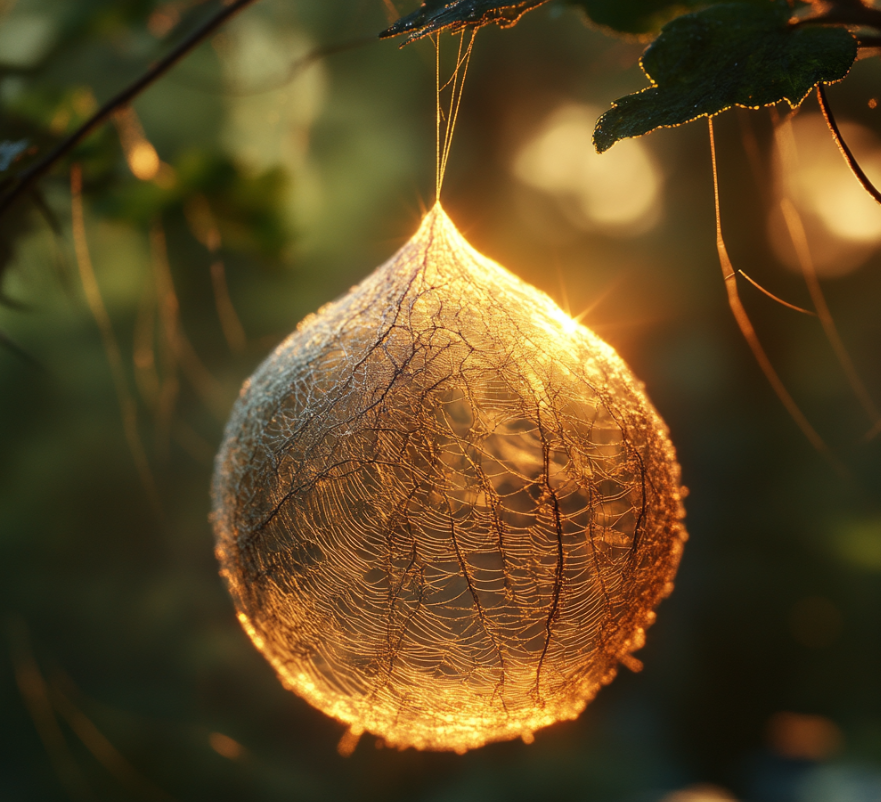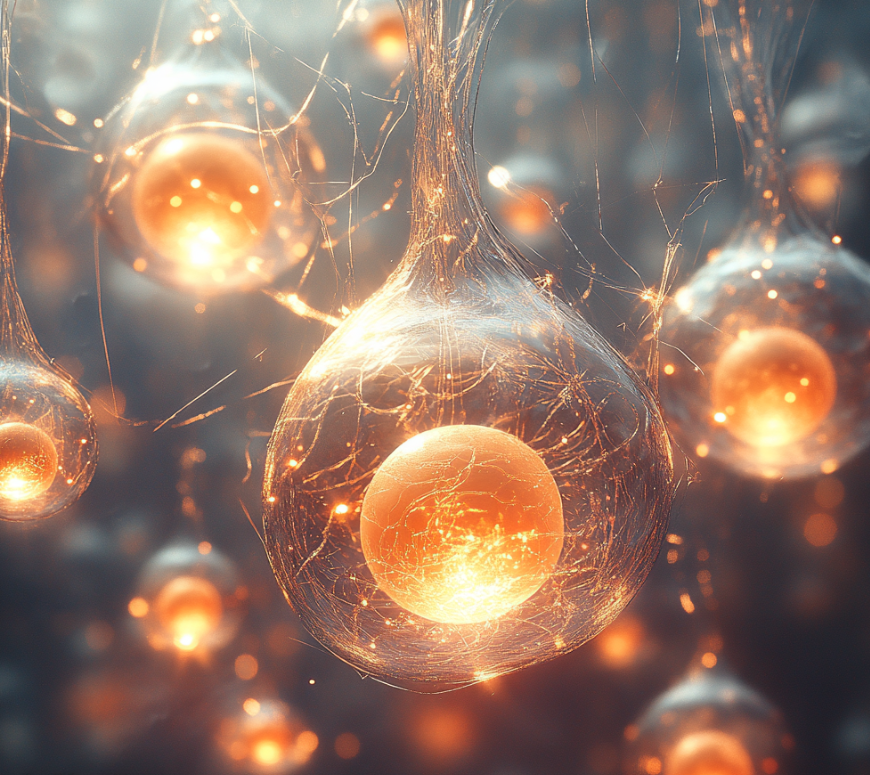Spider eggs play a crucial role in ensuring the survival of the species. Although small and delicate, these eggs contain fascinating components that provide nourishment for the developing spiderlings. In this guide, we’ll explore what spider eggs are made of and how spiders protect and nurture their offspring until hatching.
What Are Spider Eggs?
Spider eggs primarily consist of proteins, nutrients, and water. These components support the growth of the spiderlings inside. The eggs are soft and fluid-like, encased in a silk egg sac, which the mother spider creates to protect them from environmental dangers and predators. For more on Halloween-themed foods, check out these creative spider deviled eggs.

The Egg Sac: A Silk-Woven Fortress
Spiders produce strong and flexible silk to create the egg sac, which protects the eggs from external threats. Depending on the species, the shape of the egg sac can be spherical, disk-like, or unique to its environment. Some spiders attach their egg sacs to surfaces such as leaves, rocks, or within their webs, while others carry the sacs with them. Learn more about how spiders use silk effectively with this Mediterranean Couscous Salad recipe for a fun comparison—although not quite as creepy!
What Are Spider Eggs Made Of?
Spider eggs contain several critical components that ensure the survival of the spiderlings:
- Proteins: Support spiderling growth.
- Nutrients: Stored in the egg, these nourish the developing spiderlings.
- Water: Helps maintain the fluid balance within the egg, crucial for development.
The mother spider wraps the eggs in a silk egg sac to protect them from environmental conditions and predators. The egg sac helps regulate humidity and temperature, ensuring a favorable environment for the spiderlings. For another nutrient-packed option, try this Avocado Salsa Recipe for a healthy, non-spooky treat!

Development Inside the Egg Sac
After laying the eggs, the mother spider uses her silk to protect them in the egg sac. The environment within the sac—particularly humidity and temperature—plays a critical role in their development. In some species, like wolf spiders, the mother carries the egg sac to ensure the young develop in optimal conditions.
Some spiders build elaborate structures around the egg sac to offer further protection, ensuring a safe environment for the spiderlings.
Spider Egg Hatching Process
When the eggs are ready to hatch, the spiderlings emerge from the egg sac. In some cases, the mother helps by tearing open the sac, while in other species, the spiderlings take the initiative. The young spiders, called spiderlings, resemble tiny adult spiders. They often remain close to their mother in the early stages, seeking protection and nourishment.
In certain species, such as the wolf spider, the spiderlings cling to their mother’s back for added protection.

Spiderlings: What Happens After They Hatch?
After hatching, spiderlings enter a vulnerable period. Though they look like miniature adult spiders, they need time to grow. Spiderlings molt multiple times, shedding their exoskeleton as they grow larger. This process can leave them exposed to predators or environmental threats, but it is essential for their development.
- Molting: Crucial for growth, molting involves shedding the exoskeleton.
- Protection: Some species continue to care for their young after hatching, while others leave the spiderlings to fend for themselves.
For a less intimidating treat, consider making these Coconut Cookies for your next gathering!
The Role of Molting in Spider Development
As spiderlings grow, they molt several times, shedding their old exoskeleton to accommodate their increasing size. Molting makes them vulnerable to predators, but it is a critical stage in their development. Some spiders find hidden locations to molt, while others may suspend themselves in webs to avoid danger.
Spider Egg Protection Strategies
Spiders use various strategies to protect their eggs from predators and environmental threats:
- Attachment: Many spiders attach their egg sacs to surfaces like leaves or rocks.
- Silk Layers: Multiple layers of silk help fortify the egg sac.
- Maternal Care: In species like wolf spiders, mothers protect the egg sac and their young until they are ready to survive independently.
These strategies significantly increase the chances of survival for the young spiderlings.
FAQs
What do spider eggs look like?
Spider eggs are small, round, and often fluid-like in appearance. They are encased in a silk egg sac, which protects them from environmental threats.
How many eggs do spiders lay?
Spiders can lay anywhere from dozens to thousands of eggs, depending on the species.
Do spiders die after laying eggs?
In some species, female spiders die shortly after laying eggs. However, other species, like wolf spiders, continue to protect their eggs and young after they hatch.
Can spider eggs survive without the mother?
Yes, many species abandon their egg sacs after laying them. The eggs remain protected within the silk egg sac, allowing them to develop without the mother’s care.
Conclusion
Spider eggs are composed of proteins, nutrients, and water, all encased in a protective silk egg sac. This intricate design helps ensure the successful development and eventual hatching of the spiderlings. By understanding what spider eggs are made of and the various protective strategies spiders use, we can appreciate the fascinating complexity of their lifecycle.
For more fun insights into creepy or non-creepy creations, explore the fun Spider Deviled Eggs for Halloween recipe for a spooky holiday treat!

